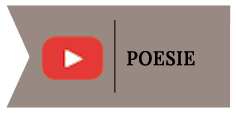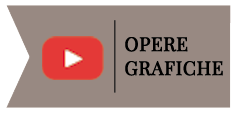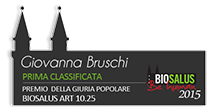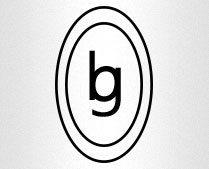Franco Ivan Nucciarelli – 2003
The graphic work of Giovanna Bruschi (1977-2003) interpreted by an iconologist
I feel that the time invested in retracing twenty-six years of Giovanna Bruschi’s graphic production – recently collected in this volume – in my possession and for your review – will not be spent in vain, since we will retrace these years together, as playmates figuring out an ancient game.
Twenty-six years is a long time, for many more than a third of their lives (for married couples after twenty-five years it’s time to celebrate their silver wedding), but in the serene and imperturbable world of art, time is relative or dilated, and it is difficult – if not impossible – to decide between the two adjectives, because in art time is irrelevant, although it is unquestionably affecting the life of the artist as a human being. However, it doesn’t really matter, because if a human product is a work of art, it has always been the same since time immemorial. Whether old or young, healthy or ill, rich or poor, the artist takes into account only his own clock and inner calendar, these being the only references capable of signaling the right moment to start working on a project, and another moment – not less important – when he decides to stop in order to avoid ruining it. But who is an artist and why does art accompany us from the dawn of time and will continue to do so until the end of the world? These are very difficult questions to answer.
But perhaps an artist is someone who has a personal world vision to reveal and finds the right form to express it; to do this, he/she must have a solid, unshakable faith; in order to seek the right form, he must commit personally without reserve, to the limit of his/her possibilities and beyond, with a mental and moral attitude close to militancy, priesthood, even asceticism. Art, since it is born out of a playful dimension, is essentially a game, but a painful one, such as to entangle the artist – who has crossed a threshold – in its web, and is no longer free to decide whether to stop or to go forward.
Sacrifice is taken for granted; it is part of the game: things of value are covered in sweat, if not in blood. An artist may occasionally cheat others, but not himself. When in a labyrinth he can only come out if there is a loss of faith in his world. This happened to Gioacchino Rossini when he stopped composing, And Arthur Rimbaud stopped writing poetry; both of them at one point continued to live, but no longer as artists. They had perhaps noticed that their inner worlds no longer existed or that the form to express them by now had moved to unreachable heights.
Many years ago Elsa Morante, in the introductory essay to a volume on Fra Angelico, identified the reason of the painter’s success with the same world he expressed in his paintings; but she did not limit this overwhelming connection between art and ideology to the joyous case of the Dominican artist. She noticed the same had happened to a famous poet, who had moved in a completely different historical-cultural horizon, Vladimir Mayakovski. As long as the Russian author believed in those words that he was publishing, he kept making poetry, but when he began lacking faith, he put an end to his days. But who is allowing the artist to access his world vision? Who gives him this rare, exceptional gift? It is hard to say.
It is probable, however, that the answer is contained in the term ‘inspiration’ with its semantic ambiguity, being able to signify both a force acquired from the outside world, as well as an internal energy capable of moving the artist. Otherwise, it could be the brainchild of a unique mental state, often operating outside the mainstream, in some cases against the system, justified by an ancient and established proverb that claims “genius and recklessness go together”. Assuming that the artist has come to terms with his inner world, how does he then find the right medium to express it?
Unavoidably, this is when the historical or social component comes into play, an element present in every artistic experience. The artist, even the most revolutionary, is part of a tradition that, even if debunked, he however knows what he must ultimately confront.
The artist, even the most conservative or conformist, overturns tradition or at least brings about consistent alterations. In the journey of art from the dawn of time to the present, the spring is precisely this: a continuous dialectical exchange between conservation and innovation. Certain historical as well as famous events are illuminating: in the Last Judgment, Michelangelo destroys mercilessly a painstakingly achieved Renaissance balance, as he opens the floodgates to artistic forms of shocking modernity. He turns back and looks perhaps with a hint of nostalgia to the abandoned tradition while reintroducing the ultramarine blue, the precious lapis lazuli, a note of both late Gothic or High Renaissance decorativism. In the same fashion, Montale speaks of his and other poets’ traditional rhyme and prosody, as a legacy that cannot be eliminated and is actually present in all poetry, in some cases even against the will of the author, or at least without his awareness.
Similarly, Giovanna Bruschi manages to be entirely herself, without forgetting the lessons of her teachers, among whom play a leading role Gerardo Dottori and Diego Donati. From Dottori she seems to inherit the trepidation of the flight, the courage of Icarus who wants to look at the world from above, watching the multitude of surfaces, no longer distracted by details, yet paying with his life s this act of courage or pride. From Donati she has acquired the Franciscan love for the world, in its entirety and without exclusions. So if the sun and the moon are beautiful, so are the humble clod of earth or, better still, the withered petal fallen to the ground, which, compared to the heavens, have a different but not inferior beauty.
As we can see, it is not so much a question of quotations, neither thematic nor formal, but rather of shared mental attitudes, not rooted in dependencies, but in correspondences. If we intend to offer to the audience a summary of Giovanna Bruschi’s graphics in the limited time available during a group presentation, what would be the fundamental themes and motifs of her work?
A priority both in chronological and ideological terms would be the flora, consciously chosen by the author for its apparent simplicity and immediacy, and especially seen as an ideal field of investigation to verify, experiment and hone her best technique. But already in Vortice (1979, fig. 1) the main interests of Giovanna Bruschi come forward: the vegetal elements represent a natural opportunity to freeze movement; in La vie en rose (1980, fig. 2) the misleading title introduces a dreamlike atmosphere, dominated by the threat of the plant world, observed from an impressive proximity, which opens up boundless horizons, dominated by a violent play of light and shadow.
In the same year M’ama … non m’ama … (fig. 3) proposes a dissolution of form, which questions reality itself and shows an interesting aspect of the author’s figurative language. Even when in the pictorial field there are figures that appear to be very compatible with the external world, in reality these are valid opportunities to give shape to abstract forms of thought. Years later, in Io sono la vite … voi i tralci (fig. 4), the conformity with reality is practically eliminated and the forms of the plants, rather than described, are now evoked, basically reduced to graphic abstract shapes as in certain early medieval bas-reliefs.The next noticeable trend is the rural and urban landscape. If La vigna (1978, fig. 5) presents a calm contemplation of a still perfectly recognizable countryside, this is at variance with Colle del vento (1979, fig. 6), where the undisputed theme of curvilinear lines dissolves the number of buildings, plants and street curves and transforms everything into a primordial chaos. In the same year, in Harmonious contrasts (fig. 7), the play of light and shadow, now a recurrent theme, blends and melts away the core elements of the subject-matter. In 1999, La vita di prima (fig. 8) features a recognizable fragment of the courtyard from the Folci PalazzoTrinci of Foligno, together with particles of jewels and musical instruments, all rendered with such a personal style, resembling pebbles for a purely intellectual mosaic. In the artist’s evolution we observe a slow but decisive tendency toward a progressive abstraction as can be seen in Oh sole (2002, fig. 9) and An ancient re-emergence (fig. 10), this being recently executed, where the highlight that dominates the composition is a strong play of light-dark contrasts, in which the forms must conform, like the dog or the wolf – in the latter painting – that is howling at an invisible and perhaps non-existent moon, imprisoned and shattered within a maze of curved lines.
Non ti ho amato per scherzo II (1999, fig. 11) represents just a portion of a head crowned with thorns, and two arms, intentionally left unfinished. What remains of the body disappears now dematerialized under a drape as in a Byzantine mosaic, where a real body behind the tunic would be unthinkable. Always in the same painting we witness a significant “semantic” use of color: the use of purple, invariably connoting suffering, being rendered in various tones, as the true vehicle of a painful message. The same concept applies in La Conversione (2002, fig. 12) where the human figure appears without altering the circular rhythms that direct the eye of the beholder outside the composition, thus extending the pictorial field by virtue of an illusionistic effect much wider than the actual dimensions. The grape-like red, reminiscent of ripe fruits, is a symbol and a promise resulting from the act of conversion.
The other trend, complementary to the first, is toward the progressive loss of both the volume and the relevance of all subject-matter compared to the pure play of light. At first, flowers seem to fill the pictorial field almost completely, as in Sorella acqua (1981, fig. 13), where the winter poplars, now depleted of leaves, occupy the entire composition, a convention consistent with the trees painted by Pinturicchio, which expand the space around them, often insufficient to accommodate the emotional effect well beyond the limits of the canvas. In Bruschi’s most recent works the human figure barely occupies a quarter of the compositional space, now reduced to a sheer opportunity to express a state of mind, or an emotion, these being the artist’s true centers of interest.
Another significant aspect – indeed a real leit motif – of Bruschi’s entire oeuvre, is the consistent recourse to circular patterns and lines with rhythms and orbits that are constantly stenciled to signify and influence the meaning of most of her works; among these, particularly significant are Eva (1982, fig. 14), Adamo (1983, fig. 15) and Voglia di … (1984, fig. 16) where the figures emerge with extreme difficulty from the vortex of lines and patterns, suggesting the idea of a recently completed creation.
The ever-increasing presence of abstraction and therefore the progressive divorce from the canons of academic painting does not purport to be a break with tradition: on the contrary, the progressive dematerialization of forms reveals an underlying geometric structure, surprisingly brought to light while establishing close analogies with the classic canons of painting. In the aforementioned Conversione the continuous overlapping of circular elements signifies – in a more dynamic and less codified formula – the same patterns found in paintings both medieval or executed in the Renaissance.
Giovanna Bruschi’s innovation consists in transferring the centers of geometric patterns outside the canvas and relocating the picture, so to speak, at the margins of a partially concealed geometry, yet present as an informative reference for the entire painting. A similar situation emerges from L’anima mia anela a te (1988, fig. 17) where trees, fronds, leaves, rocks, waters, although recognizable, are all reduced to essential geometric shapes in the belief that world beauty is a byproduct of its own sense of order, from its own harmony, more or less evident, but always the brainchild of a superior intelligence on which humanity is patterned upon, and to which it tends to seek an ideal reference.
These observations, based on the finished products and included in the publication of the volume to a wide audience, confirm Giovanna Bruschi’s firm intention to embody the role of an artist fully aware of her objectives, and directions. The artist has never commenced a work without bringing it to completion. The category of the “unfinished”, from Schubert’s Incompiuta, or Kafka’s Amerika , to the all too known Prigioni and to the several Pietà by Michelangelo, is not present in Giovanna Bruschi’s universe. Only the production times have occasionally been delayed. This means that the while initial concept has never been abandoned, only the path to reach it and give it a final shape may have turned out to be much more complex than originally expected. However, the artist has never finished a product without being fully satisfied with the result. As a matter of fact, judging from her output, she declares herself always satisfied and would never intervene to modify them, much less destroy them. When she pursues a concept, she tries to maintain a detached attitude: she does not underestimate it, but neither does she exalt it, she rather tends to consider it as the beginning of a new creation. She defines the initial idea raw as an embryo, which needs to be nurtured from the inside, a process subject to long and complex manipulations, which proceeds not by adding anything, but only through removing excess material: this being the definition of sculpture from somebody who knew this well: Michelangelo Buonarroti.
As a rule, she is inspired by an external reality, always confronting her inner world; only rarely inspired by paintings or writings from other artists. But this is a rule, not a law, because each one of us is conditioned by different experiences and not always regulated by the same mental attitudes. As an artist, Giovanna Bruschi finds within herself a unifying element: a unique way of looking at an external and internal reality, physical and mental. She considers herself born as an artist and has always felt a strong familiarity with the tools of her trade, thinking of herself as a sponge that absorbs and selects only to reject what she does not deem to be valid. In her worldview, Nature is the ultimate ruler. If the initial chapter of her catalog is dedicated to botanical themes, this is a deliberate methodological choice: she tends to focus on a seemingly modest content – and not very ideologically suitable – only to give free rein and maximum emphasis to aesthetical values and to master her technique. A strong initial emotional reaction can also be obtained from the simplest things, both as subjects to be depicted and as supports. Some works have been sketched even on grocery bags, because after all Giovanna Bruschi has never paid any attention where to jot down her ideas. The face of the Blessed Angela of Foligno (1992, fig. 18) is a pencil drawing on an A4 sheet of generic photocopy paper.
For the artist there are also particularly challenging subjects that demand a deferential attitude: two most significant examples are the mystical world of Blessed Angela of Foligno and the poetic world of Bruno Dozzini. But next to these highly engaging themes, at the outset, there can also be something much, much simpler. In fact, nothing is ever obvious, because the artist’s eye, as well as the eye of the beholder, can nevertheless discover new and unexpected perspectives, regardless of the banality of the subject-matter. When the artist is drawing, his real companions are only the sheet and the pencil; if there are cultural connotations, they are remote and now part of an assimilated background, to which [the artist] does not refer to either voluntarily or consciously.
Life is movement and rhythm, and both should be fixed on the artist’s paper. The presence of Gerardo Dottori, among her teachers, put her in close contact with aero-painting and futurism, but it is incorrect, if not a major blunder, to interpret Giovanna Bruschi’s figurative language as a direct consequence of Dottori’s influence, in spite of some similarities. Bruschi recollects that Dottori anticipated several aspects of modernity that would eventually change our reality, but although he could – for instance – paint the teleportation of a motor coach through a wall, the world of Giovanna Bruschi is far removed from this, as she defines herself more as an expressionist than a futurist. The artist operates in an educational environment supported by a solid cultural background, validated by her recent incisive and highly appreciated teaching in the field of Art History. Bruschi’s studies and life experiences nevertheless merge into something different that she later reveals in her paintings, where she manifests the novelty of her message, based n the principle that painting is her only way of expressing herself.
According to Giovanna Bruschi artistic content is never secondary, but rather fundamental: we cannot inhabit a reality unfamiliar to us: the identification with our subject matter is absolute, as it was for the blessed Beato Angelico, or for the not so blessed Mayakovski.
Since the fundamental component of Bruschi’s art is the message to be converted into images in order to be disclosed, the artist is not limited to a particular technique, or to any particular media. The formats are very varied, ranging from a stamp to a sheet of paper. The mental attitude behind this lack of method is clear: any given surface can be transformed into an excellent opportunity to convey a meaningful message.
As far as her techniques are concerned, and although she employs several of them, Bruschi prefers the etching process, which she has mastered with a virtuosity of the highest level: indeed, this is where she challenges herself: to bring forth the excellent aesthetic values from her material and technique, which must be under her total control to allow for the best outcome. The etching, in fact, requires a very careful preparation, and it must be of the highest quality and in line with the artist’s expectations from the very inception at the pure material level.
The perfect mastery of her technique and the attention to the material support places Giovanna Bruschi on a level of ideal continuity with the Masters of the past, as well as with the most authentic centuries-old artistic traditions. Before being artists, the classic authors of the ancient past were in fact artisans who mastered an in-depth knowledge of their trade and techniques, in order to be able to obtain the highest aesthetic results. The first step toward the work of art was the choice of an adequate support, followed by the best possible technique to execute their projects. In many instances the choice of material itself was not merely a support, but the real element that would determine the final image.
I believe that there are two classic examples that would help to understand the environment in which our artist operates. Beato Angelico, a painter in open contrast with his own times, far removed from decorativism as an end in itself, and who introduced silica dust into his frescoes, often grinding up clear glass fragments to give the paint a luminous luster, which in certain cases – as in the Annunciation at the top of the stairs in the Convent of St. Mark – give the impression that the wings of the archangel Gabriel, already resting on the ground, still continue to move imperceptibly for the recent flight. Also Leonardo da Vinci – and with him other Lombard painters of the late fifteenth century – in some paintings cured his panels with such subtle preparation that the veins and warm tones of the wood entered fully into the chromatic play of the pictorial surface.
Giovanna Bruschi reintroduces the purest and most authentic classic traditions: one technical, the other aesthetical. The first involves significant ideological and possibly moral implications: art is alchemy, if not a ritual, whose fruition requires a total respect for the technical process, equal to the finished product. The second reveals an aesthetic consideration, in which artistic inspiration plays a major role. A work of art is born only after a rigorous technical and ideological process and these are the two sides of the same coin.
The result is a highly synthetic figurative language, in which the accessory element is present only marginally, if not entirely absent; the work of art appears after a long and methodical process, often pure and authentic, on the verge of immateriality, and thus safe from destruction, always, forever and ever.
.
This is why I feel that the time dedicated to retrace the creative process of twenty-six years of production by Giovanna Bruschi, is not in vain. It is now being published in this volume and delivered by my hands and under your eyes, for us to review them together, as playmates in an ancient game.





